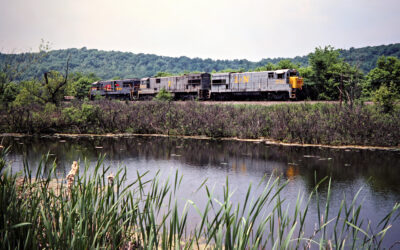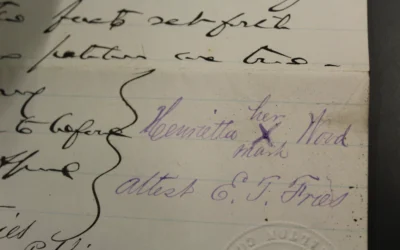When newlyweds first married, the community worked together to build a first home for the couple. The early settlers worked together to survive. In this post, we learn how the cabins were built and see some examples.

Lewis Collins Portrait from History of Kentucky Inside Cover [Public Domain]
Lewis Collins (1797-1870), who lived in Mason County, Kentucky, is often credited as the commonwealth’s first historian. His book Collins’ Historical Sketches of Kentucky leads readers through Kentucky’s beginnings to 1847.
In the early part of the book, Collins discusses Kentucky settlers’ customs. He attributed the text to the Reverend Joseph Doddridge’s book called Notes on the Settlement and Indian Wars of the Western Parts of Virginia and Pennsylvania.
His text describes how the early settlers dressed, lived, and worked. He noted the culture of surviving together and sharing wealth, which meant food and shelter. In the following excerpt he describes the process for building a cabin for a new family.
Setting Up House for Newlyweds
The marriage being over, the next thing in order was to settle the young couple. A spot was selected on a piece of land of one of the parents for their habitation. A day was appointed shortly after their marriage, for commencing the work of building the cabin.
Building the Cabin
The fatigue party consisted of choppers, whose business it was to fell the trees and cut them off at the proper length. A man with a team for hauling them to the place, and arranging them properly assorted at the sides and ends of the building, a carpenter if such he might be called, whose business it was to search the woods for a proper tree for making clapboards for the roof.
Everything is Done by Hand
In the following video, the host, Harry Rogers, works with a close friend to create clapboard shingles by hand for his outdoor building.
The tree for this purpose must be straight grained and from three to four feet in diameter. The boards were split four feet long with a large froe, and as wide as the timber would allow. They [the boards] were used without planning or shaving.
Tools Required
In this video, Art, a homesteader, shows what a froe is and how it’s used.
Another division was employed in getting puncheons for the floor of the cabin; this was done by splitting trees about eighteen inches in diameter, and hewing the face of them with a broad axe. They were half the length of the floor they were intended to make.
The materials being prepared, the neighbors collected for the raising. The roof and sometimes the floor were finished on the same day the house was raised.
Inside of the Cabin
A third day was commonly spent by the carpenters in leveling off the floor and making a clapboard door and table. This last was made of a split slab and supported by four round legs set in auger holes. Some three legged stools were made in the same manner. Pins stuck in the logs at the back of the house supported clapboards which served as shelves for the table furniture.
Adding Household Furnishings
A single fork placed with its lower end in a hole in the floor and the upper end fastened to a joist, served for a bedstead, by placing a pole in the fork with one end through a crack in the logs of the wall. This front pole was crossed by a shorter one within the fork, with its outer end through another crack. From the front pole through a crack between the logs of the end of the house, the boards were placed which formed the bottom of the bed.
A few pegs around the wall for a display of the coats of the women and the hunting shirts of the men, and two small forks or bucks’ horns to a joist for the rifle and shot pouch, completed the carpenter’s work.
Enjoying a House Warming Celebration
The cabin being finished, the ceremony of house warming took place before the young people were permitted to move into it. This was a dance of a whole night’s continuance, made up of the relations of the bride and groom and their neighbors. On the day following, the young people took possession of their new mansion.
Final Advice: Don’t be a Lawrence
At house raisings, log rollings, and harvest parties, every one was expected to do his duty faithfully. A person who did not perform his share of labor on these occasions, was designated by the epithet of “Lawrence,” or some other title still more opprobrious; and when it came to his turn to require the like aid from his neighbors, the idler soon felt his punishment in their refusal to attend to his calls.





